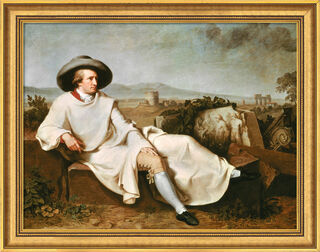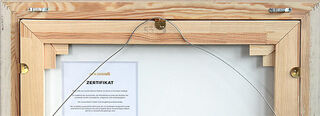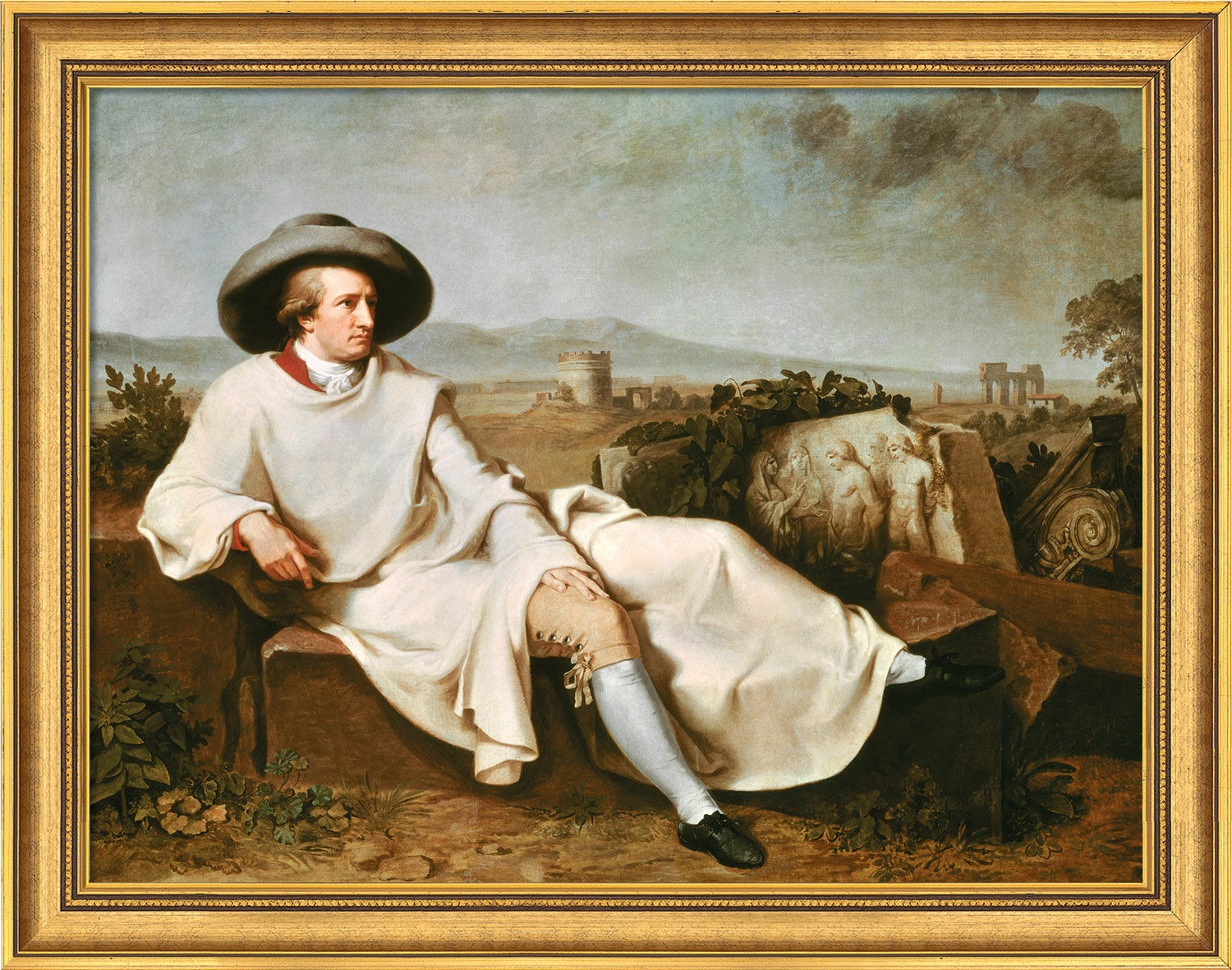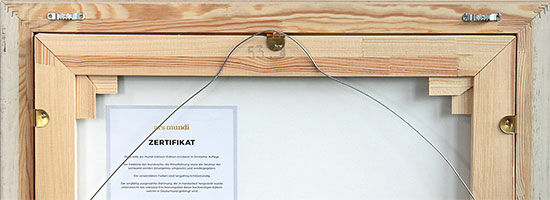Picture "Goethe in the Roman Campagna" (1786/87), framed


Picture "Goethe in the Roman Campagna" (1786/87), framed
Quick info
ars mundi Exclusive Edition | limited, 199 copies | numbered certificate | reproduction, Giclée print on canvas | stretcher frame | museum frame | size 70 x 55 cm
Detailed description
Picture "Goethe in the Roman Campagna" (1786/87), framed
The portrait painter Johann Heinrich Wilhelm Tischbein was born into a renowned family of artists. Because of his painting "Goethe in the Roman Campagna", Tischbein was given the honorary title "Goethe-Tischbein". His portrait still has a decisive influence on our perception of Goethe's look to this day. Even Andy Warhol used the face framed by a sun hat for a famous screenprint in 1982.
Original: Städel, Frankfurt am Main. Oil on canvas. Original size 206 x 164 cm.
Reproduced using the Fine Art Giclée process on artist's canvas, mounted on a stretcher frame. With a handmade real wood museum frame. The edition is limited to 199 copies and individually numbered on the certificate on the back. Size 70 x 55 cm. Exclusively at ars mundi.
Frame configurator
Customised picture frame

Frame configurator
Customised picture frame






Graphic or sculpture edition that was initiated by ars mundi and is available only at ars mundi or at distribution partners licensed by ars mundi.
Giclée = derived from the French verb gicler "to squirt, spurt".
The giclée method is a digital printing process. It is a high-resolution, large-format printout on an inkjet printer with special different-coloured dye- or pigment-based inks (usually six to twelve). The colours are fade-proof, i.e. resistant to harmful UV light. They have a high richness of nuance, contrast and saturation.
The giclée process is suitable for art canvases, handmade and watercolour paper as well as for silk.
The term refers to the art movements of ancient, mostly Greek models.
According to the current understanding, classicism is the period between 1750 and 1840 when the late Baroque was gradually replaced by classically orientated art. The great explorations of Greek art and architecture at that time awakened a true enthusiasm for antique models. The Glyptothek in Munich, the Panthéon in Paris, The New Guard House (Neue Wache) and the Brandenburg Gate in Berlin are just a few examples of the revived classical style.
The leaders of the statuary art were Antonio Canova, Bertel Thorvaldsen and in Germany Johann Gottfried Schadow and Christian Daniel Rauch.
In painting, the outstanding representatives of this style are Jaques-Louis David or Jean-Auguste-Dominique Ingres.






